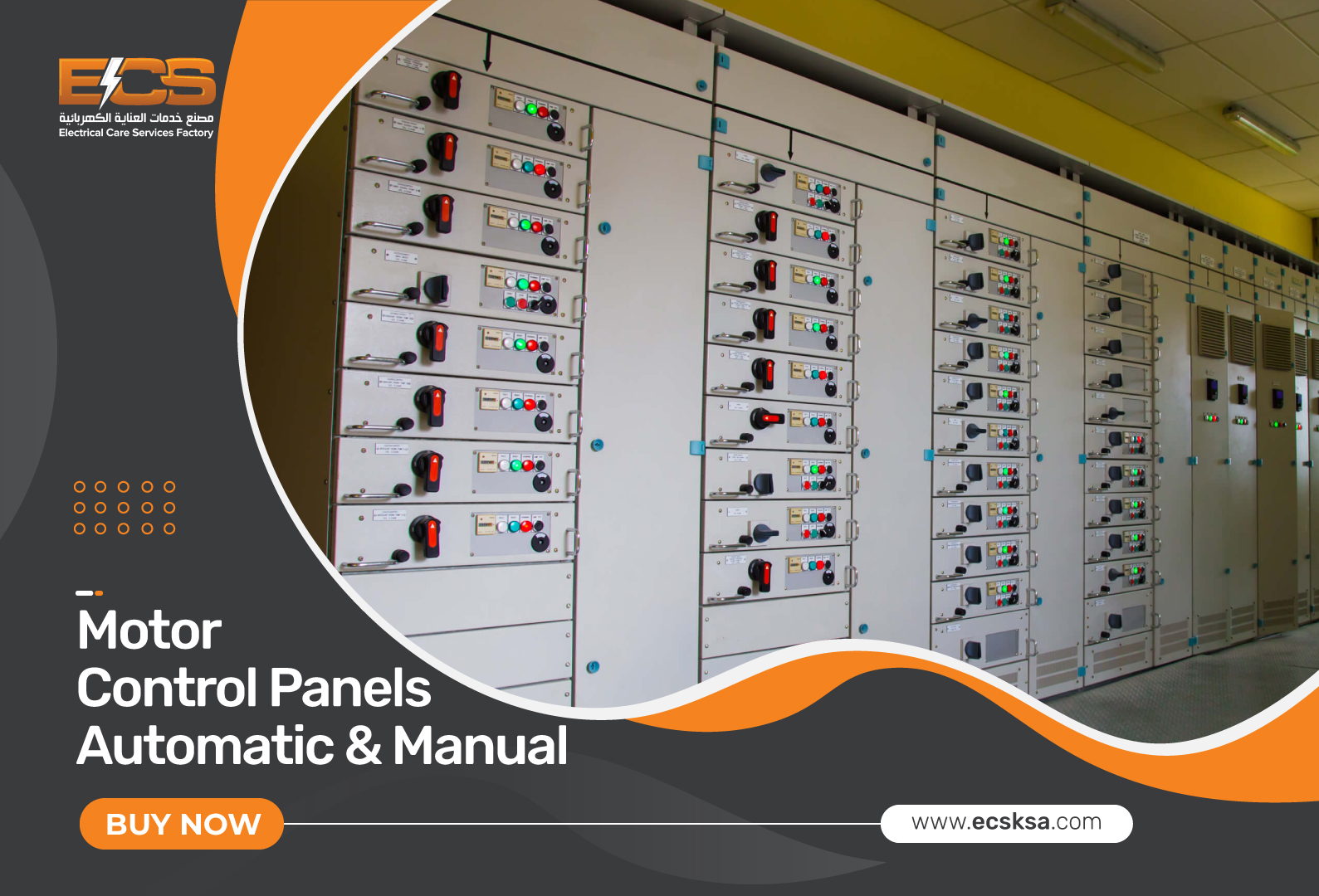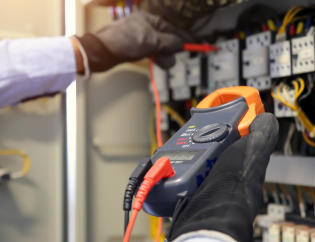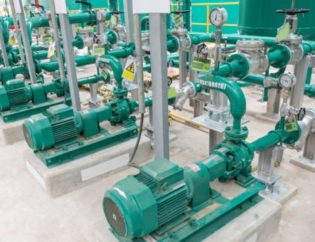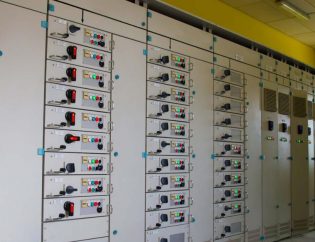But when it comes to large motors, you cannot rely on a simple on-and-off switch. It’s because when large motors run processes in any industrial or manufacturing system, too much heat is generated, and motors need to be stopped when a specific temperature threshold has been met. Also, large motors require multiple types of power that a simple switch cannot handle.
For that, manufacturing companies have created motor control panels that automatically turn on and off a motor according to industry guidelines and deliver the required type of power to motors. As a result, motors perform for a long time, and you can also save energy.
In this article, you’ll learn everything about motor control panels, including types, components, functionalities, differences, and much more.
What is a Motor Control Panel?
 In the industry, motor control panels are also called motor starter control panels and are the necessary equipment that must be installed with every large motor. Otherwise, you cannot ensure smooth operations. It’s because once your motor gets short-circuited or fused, everything in your industrial process will come to a halt.
In the industry, motor control panels are also called motor starter control panels and are the necessary equipment that must be installed with every large motor. Otherwise, you cannot ensure smooth operations. It’s because once your motor gets short-circuited or fused, everything in your industrial process will come to a halt.
By definition, a motor control panel is a specific piece of equipment with a specific purpose in an industrial operation. It stops the motor when there is an overload, which causes the motor to overheat by using an electric contact and overload relay.
Generally, a motor control panel provides you with both automatic and manual control of motor operations. It means that the motor control panel automatically stops and starts the motor according to safety standards. But it also allows you to stop and start the motor whenever required using manual controls.
Motor control panels can handle a single motor as well as multiple motors. Also, you can use them with both single-phase current and 3-phase current.
Components of Motor Control Panel
Here are the components.
- Enclosure: The enclosure protects all parts of the panel from weather, vibrations, and everything that can cause damage.
- Disconnect switch: The purpose of the disconnect switch is to stop electrical power and break the electric circuit whenever required.
- Contactor: The contactor is used to start and stop the operation of the motor.
- Overload relays: The overload relay is used to stop the motor when it is overheated.
- Control transformer: The control transformer is used to regulate the voltage.
- Pilot devices: The pilot devices are there to stop and start the automatic operation of the panel.
How Does a Motor Control Panel Work?
During an industrial process, a motor has to perform many functions, such as:
- Clock-wise torque
- Anticlockwise torque
- Precise forward and backward rotations
- Slow rotations
- Fast rotations
- Rotations according to the requirement
- Stopping rotation at the required time
All the above processes are done by the motor when a controller controls it.
In short, a motor control panel ensures that the motor runs, starts, and stops according to the industrial requirement. And it is done by the process control functionality of the motor control panel, which also saves the motor from overheating.
Motor control panels have components, such as disconnectors, contactors, transformers, and overload relays, that ensure the smooth industrial process performed by the motor.
What are the Types of Motor Controls?
Motor controls have four basic types.
- AC: AC motor controllers are specific devices that provide the motor with the required power for the desired output. In other words, AC motor controls deliver variable speed and torque in an industrial process.
- DC: DC motor controllers take AC power from an electrical distribution system and turn it into DC power for the motors. Next, they control the speed and torque of the motor to deliver the required output in an industrial process.
- Servo: Servo motor controllers take constant AC power from the source and turn it into pulsating and variable power for the motor. As a result, the motor can perform the desired function in an industrial process.
- Stepper: Stepper motor controllers also turn the AC power into pulsating and variable frequency power for the motor to accomplish the specific function in an industrial process. These motor controllers are mainly used to control the motor’s position, torque, and speed. In other words, stepper motor controllers are necessary for motion control applications in industrial processes.
What are the Functions of Motor Controls?
A motor controller has two basic functions: manual and automatic. By using these functionalities, you can:
- Start the motor
- Stop the motor
- Make the motor perform the forward function
- Make the motor perform the reverse function
- Maintain the speed of the motor at a specific level
- Regulate the speed of the motor according to the requirement
- Limit the torque
- Decrease the torque at a specific time
- Increase the torque at a specific time
- Stop the motor in case of overloading
What are MCC Motor Control Centers and PCC Panels?
MCC, or motor control center, supplies the power to the motor and controls its functionality. On the other hand, a PCC panel supplies the power to the motor control panel system with at least 415 volts of voltage.
MCC provides the motor with variable power and current frequency to control its torque and speed. On the other hand, a PCC panel is responsible for taking power from the electrical distribution system and delivering it to the motor controllers with the required voltage.
A PCC acts as the source of power for MCC.
An MCC has the following components.
- Main Incomer
- Outgoing Feeder for Motor applications
- Over Load relay
- Phase Failure Relay
- Main and auxiliary contactor
A PCC has the following components.
- Power Sockets,
- Lights
- EOT Cranes
- Compressor
- MCC
How are MCC Motor Control Centers and MCP Motor Control Panels Different?
Motor control centers, or MCCs, are assembled according to NEMA and UL standards. On the other hand, MCPs, or motor control panels, are industrial pieces of equipment that may or may not be UL-listed.
Both MCC and MCP are industrial systems. But they have different in-built components.
MCPs are used to run groups of motors that perform associated processes in large industrial settings. On the other hand, MCCs control a group of motors that perform different industrial processes but are not in any association.
MCPs and MCCs can be used interchangeably if the industrial process is not complex. Yet, you have to use them according to their functionality if the industrial process is complex and you have to control the motion precisely.
Both MCCs and MCPs must be installed by a professional for the customer and do the wiring according to the requirement.
A customer must never try to install MCP or MCC all by himself using common electrical knowledge.
Conclusion
Motor control panels are essential pieces of equipment for all types of industrial processes. You can save costs and reduce your power consumption if you have top-rated motor control panels in place.
Check out our product pages to find the best MCCs and MCPs for your manufacturing process motors.
Frequently Asked Questions
1. How Does a Motor Control Panel Work?
A motor control panel uses automatic switches and contactors to regulate the operation of large motors in an industrial process.
A motor control panel:
- Starts the motor
- Stops the motor
- Regulate the speed of the motor
- Maintain the forward or reverse motion of the motor
- Shut down the motor in case of overheating
2. Why are Contactors Used in a Motor Control Panel?
Contactors are used in a motor control panel to start and stop the motor operation wherever required.
Do you have a question in your mind? If so, make sure to fill out the form below!










